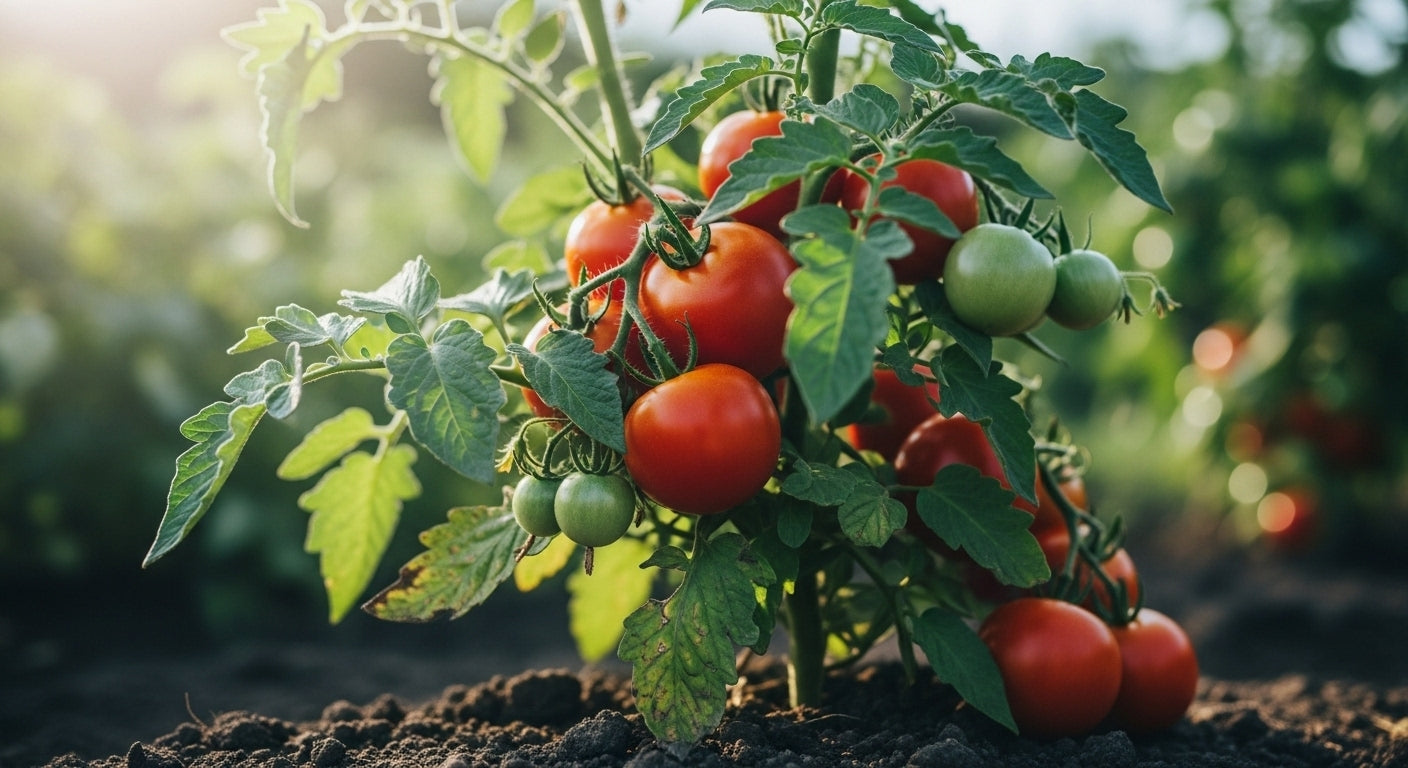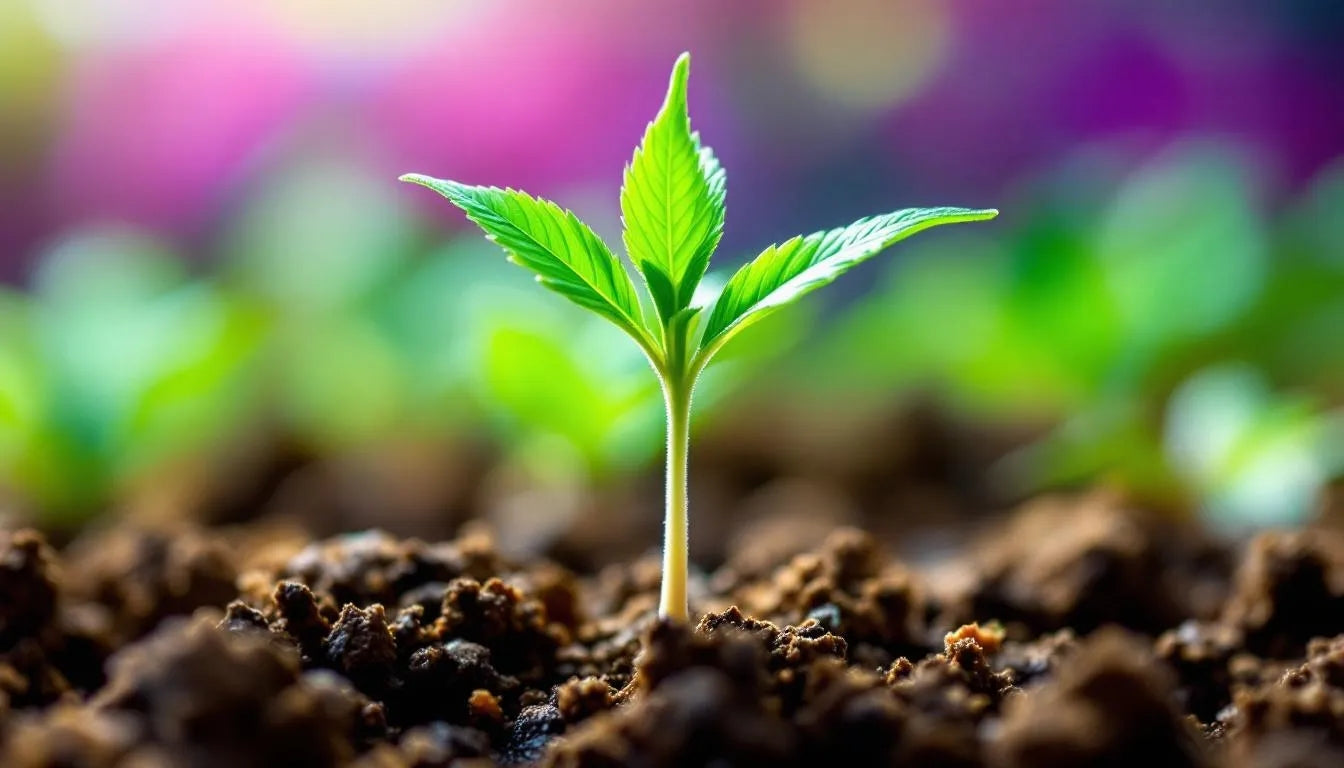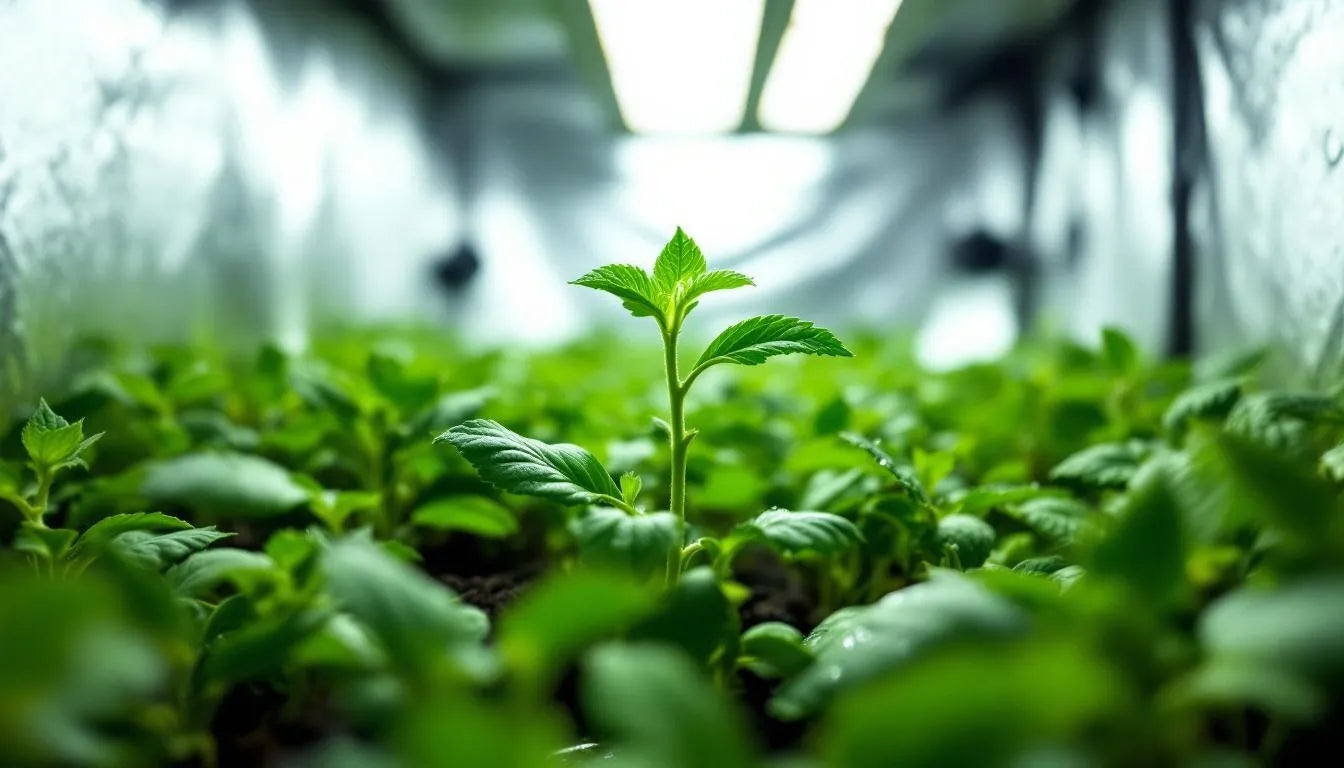
When to Harvest Plant: Your Complete Guide to Perfect Timing
Harvesting plants at the right time makes the difference between an average crop and an exceptional one. Whether you're growing in a Gorilla Grow Tent or another setup, knowing exactly when your plants are ready is crucial for maximizing potency, yield, and quality.
Most new growers either harvest too early (missing peak potency) or too late (getting overly sedative effects). This comprehensive guide will teach you the exact visual cues, testing methods, and timing strategies to harvest your plants at peak perfection.

Understanding Plant Maturity: The Science Behind Perfect Timing
Plants go through distinct maturation phases during flowering. The key is recognizing when active compounds reach peak concentration while terpenes develop their full aromatic profile.
The Flowering Timeline
Most strains flower for 8-12 weeks, but timing varies significantly:
Week 1-3: Initial bud formation and pistil development Week 4-6: Rapid bud expansion and resin production Week 7-9: Peak compound development and trichome maturation Week 10+: Active compounds convert, creating more sedative effects
The final 2-3 weeks are critical. This is when your 4x4 grow tent setup really pays off, providing the controlled environment needed for those crucial final stages.
Why Timing Matters for Potency
Active compound concentration peaks at a specific window. Harvest too early, and you'll have immature compounds with weak effects. Wait too long, and compounds degrade, creating a heavy, couch-lock experience that many users prefer to avoid.
Visual Inspection Methods: Reading Your Plants Like a Pro
Trichome Examination (Most Reliable Method)
Trichomes are tiny, mushroom-shaped glands that contain most of the plant's active compounds. They're your most reliable harvest indicator.
What to Look For:
- Clear trichomes: Too early - low potency
- Cloudy/milky trichomes: Perfect timing - peak potency
- Amber trichomes: Late harvest - more conversion, sedative effects
How to Check: Use a 60x jeweler's loupe or digital microscope. Focus on trichomes on the buds themselves, not the sugar leaves.
Optimal Ratio: 70-80% cloudy, 20-30% amber for balanced effects. For more energetic effects, harvest at 90% cloudy, 10% amber.
Pistil Color Changes
Pistils (the hair-like structures) change from white to orange/brown as plants mature.
Early Stage: 50-70% white pistils - too early Ready Stage: 70-90% orange/brown pistils - getting close Late Stage: 90%+ brown pistils - may be past peak
Important Note: Use pistils as a secondary indicator only. Some strains naturally have darker pistils throughout flowering.
Overall Plant Appearance
Mature plants show these visual signs:
- Fan leaves yellowing and dropping naturally
- Buds feel dense and firm
- Strong, pungent aroma
- Reduced water uptake
- Overall "tired" plant appearance
Advanced Harvest Timing Techniques
The Two-Stage Approach
Some experienced growers use a two-stage harvest for maximum
yield and quality:
- Top Cola Harvest: Cut the main colas when 80% of trichomes are cloudy
- Lower Bud Development: Leave lower branches for another 7-10 days to fully mature
This technique works especially well in taller setups like those using height extension kits.
Environmental Factors That Affect Timing
Your growing environment significantly impacts harvest timing:
Temperature: Higher temps accelerate maturation Humidity: Lower humidity in final weeks improves resin production Light Intensity: Adequate lighting ensures proper trichome development
If you're struggling with environmental control, check out our guide on how to lower humidity in grow tents for optimal finishing conditions.
Pre-Harvest Preparation: Setting Up for Success
The Final Week Protocol
Day 1-3: Stop all nutrients, flush with plain water Day 4-5: Reduce watering frequency Day 6-7: Begin 48-72 hour darkness period (optional but recommended)
Darkness Period Benefits
Many growers implement a 48-72 hour darkness period before harvest. This stress response can:
- Increase trichome production
- Enhance terpene development
- Reduce chlorophyll content for smoother smoke
How to Execute: Turn off all lights 2-3 days before harvest. Maintain temperature and airflow in your grow tent setup.
Tool Preparation
Essential Harvest Tools:
- Sharp, clean pruning shears
- Disposable gloves
- Magnifying loupe (60x minimum)
- Drying racks or hanging lines
- Storage containers
Strain-Specific Considerations
Indica vs Sativa Timing
Indica Strains:
- Generally 8-9 week flowering period
- Prefer slightly more amber trichomes (20-30%)
- Show maturity signs earlier
Sativa Strains:
- Often require 10-12+ weeks
- Harvest with fewer amber trichomes (10-20%)
- May not show traditional maturity signs
Auto-flowering Plants
Auto-flowering plants have unique timing considerations:
- Fixed lifecycle regardless of light schedule
- Typically ready 70-90 days from seed
- Less responsive to environmental harvest cues
- Rely heavily on trichome inspection
Common Harvest Timing Mistakes
Harvesting Too Early (Most Common Error)
Signs: Clear trichomes, mostly white pistils, thin buds Result: Weak potency, harsh smoke, poor yield Solution: Wait for 70%+ cloudy trichomes
Harvesting Too Late
Signs: Mostly amber trichomes, very brown pistils Result: Overly sedative effects, degraded potency Solution: Monitor trichomes daily in final weeks
Weather-Related Panic
Many outdoor growers harvest early due to weather concerns. Consider these factors:
- Light rain won't immediately ruin crops
- Bud rot risk increases with prolonged moisture
- Grow tent cultivation eliminates weather variables
FAQ Section
Q: How long does flowering take on average? A: Most strains flower for 8-12 weeks, with indicas typically finishing in 8-9 weeks and sativas taking 10-12+ weeks. Auto-flowering varieties complete their entire lifecycle in 70-90 days from seed.
Q: Can I harvest different parts of the plant at different times? A: Yes! Many growers harvest top colas first when 80% of trichomes are cloudy, then allow lower branches to mature for another week. This maximizes both quality and yield.
Q: What happens if I harvest too early vs too late? A: Early harvest results in weak potency and harsh effects. Late harvest converts active compounds, creating overly sedative, "couch-lock" effects. Peak harvest occurs when 70-80% of trichomes are cloudy.
Q: Do I need special equipment to check harvest readiness? A: A 60x jeweler's loupe is essential for checking trichomes. Digital microscopes work even better. Without magnification, you'll rely on less reliable indicators like pistil color.
Q: Should I stop watering before harvest? A: Reduce watering in the final week and flush with plain water. Some growers stop watering 1-2 days before harvest, but don't let plants become severely stressed.
Featured Snippet Summary
When to harvest plants: Look for 70-80% cloudy trichomes and 20-30% amber trichomes using a 60x magnifying loupe. Plants are ready when most pistils turn orange/brown, fan leaves yellow naturally, and buds feel dense and aromatic. Harvest timing affects potency - too early gives weak effects, too late creates sedative effects.
Take Your Growing to the Next Level
Perfect harvest timing is just one piece of successful cultivation. The foundation starts with a quality growing environment that gives you complete control over every variable.
Gorilla Grow Tents provide the durable, height-adjustable, and light-proof environment needed for consistent, high-quality harvests. With features like reinforced zippers, thick 1680D canvas, and adjustable height extensions, you'll have the controlled environment needed to time your harvests perfectly every time.
Whether you're starting with a compact 2x2 setup or scaling up to a large grow tent, having the right environment ensures your timing decisions lead to the highest quality harvests possible.
Ready to grow like a pro? Explore our complete grow tent systems and join thousands of growers who trust Gorilla for their most important harvests.

Lena Myles
I'm a mushroom enthusiast and home cook based in Oregon. I'm passionate about foraging and creating fungi-focused recipes, especially delicious, plant-based dishes using gourmet mushrooms like trumpet, shiitake, and oyster. When I’m not in the kitchen, you’ll usually find me wandering the woods in search of new wild flavors.


